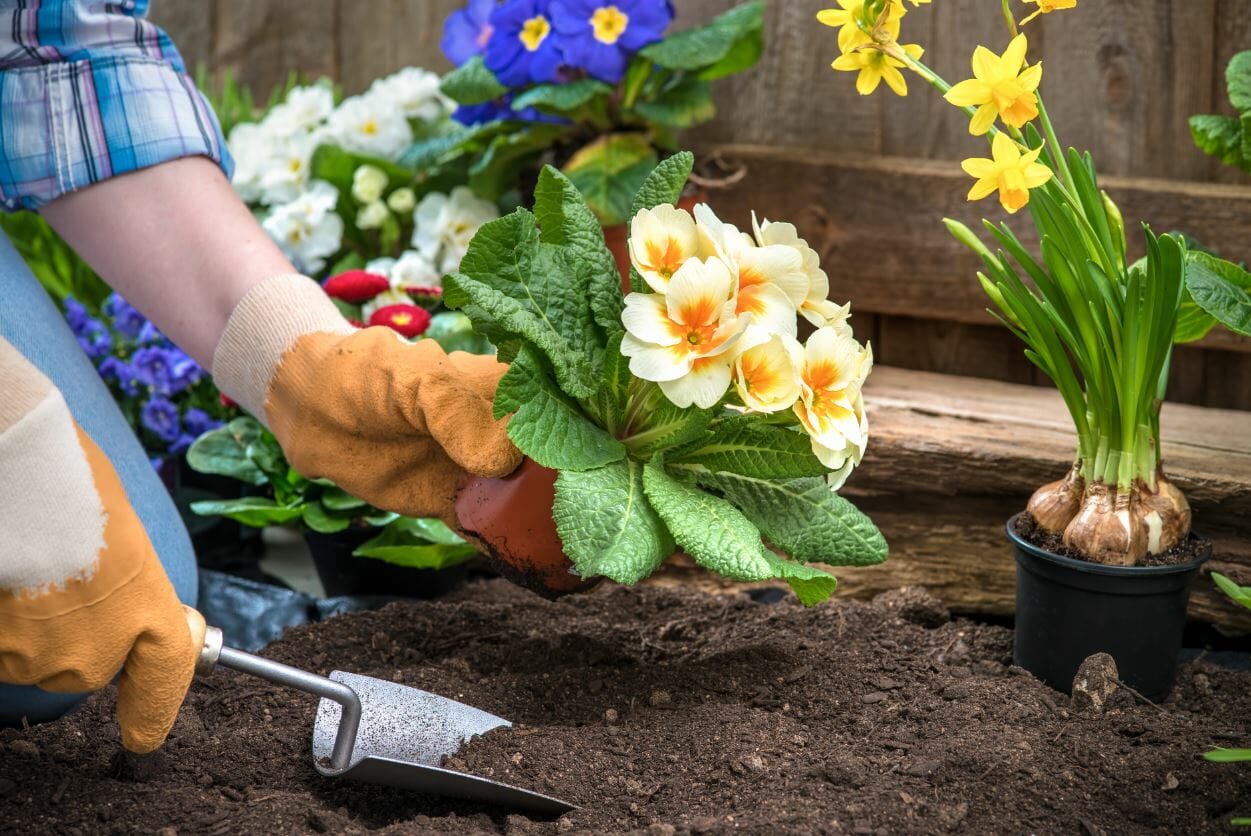
As winter draws to a close and shoots of green start appearing from the slumbering earth, it’s time to start thinking about your yard and landscape maintenance for the spring! When is the ideal time to begin planting flowers for the year, and what maintenance projects should you consider to get your yard ready for the spring and summertime enjoyment?
When should I get started?
While it’s tempting to get outside and get moving on your yard and gardening projects, a little patience goes a long way. You might have cabin fever, but your yard takes a little while to wake up from the long winter months.
The general rule of thumb for planting is that you should wait until after Mother’s Day. Generations of gardeners have heard this nugget of wisdom from their parents and grandparents, but is there truth to this saying?
The thrust of the saying is true – early spring isn’t the best time of the year for planting. This is mainly because the danger of an overnight frost could set your freshly planted flowers, shrubs, vegetables, and so on up for failure. Just one overnight drop into the 20s could mean the difference between a plant struggling throughout the season or thriving and flourishing.
The Mother’s Day rule came into being because it’s a handy marker for late spring. In most climate zones it’s safe to say that overnight and morning frosts have ceased for the year by Mother’s Day. Plus, what a great gift it would be to have freshly planted flowers for Mom!
How do I know when to expect my last frost?
Given that the Mother’s Day rule is more general than specific in nature, knowing the average last frost date for your area is key to knowing when you can get started planting. A little online research for your area will generate a trove of weather data, including average last frost. Also, the National Climatic Center website maintains a database of frost information for all regions and states, so consider starting there.
What plants are the best for my region?
Once you know when to start planting, the next question is WHAT to start planting! A lot depends on how you plan to use your yard – for entertaining, for pleasure and enjoyment, for vegetable growing, and so on. We are here to help! Ohio Valley Group are experts in the native plants of our region and we provide design expertise to help you maximize the use of your yard, whatever it may be. Click here to learn more about our design services.
We’ll help you know when and what to plant that suits your lifestyle goals.
How about yard maintenance?
There are several projects you should consider to get your yard ready for those springtime plantings! No matter how you plan to use your yard, it’s important to keep it in great shape and to be proactive on your maintenance schedule.
While it’s tempting to throw on a jacket and get started just as soon as the chill leaves the air, it’s best to wait until your lawn has mostly greened to begin aeration, mowing, and other forms of maintenance. If you tread on the lawn before it starts to actively grow, you run the danger of killing off new growth before it has a chance to take root. So a little patience at the start pays big dividends down the road.
What maintenance projects should I consider first?
The most important projects in the spring are yard raking and cleanup, fertilization, weed control, and seeding. All of these projects can be overwhelming, and we are here to help! Click here to learn more about Ohio Valley Group’s maintenance services.
Yard Raking and Cleanup
The first step in tackling your yard after winter will always be debris cleanup. Branches and leaves that fell over the winter need to go! Remember to be gentle during this first raking of the year, though – be sure not to damage the fragile turf. We recommend using a leaf rake instead of a hard garden rake. Once the debris is removed you can see which parts of the yard will need extra attention, like aeration or dethatching.
Fertilization and Weed Control
If you applied fertilizer in the fall, you may already be good to go for the spring. Consider getting your soil tested to check on nutrient levels. It’s always a good idea to have a spring application of pre-emergent herbicide for weed control. Since many such products also include a fertilizer, a spring application of fertilizer may not be necessary.
You’ll want to apply your weed control once the soil has reached a consistent temperature of 55 degrees. If you are also seeding this season, you’ll want to pay close attention to the herbicide you choose, since many, if not all, will actively prevent grass seed germination.
Seeding
You can apply seed to your lawn anytime the ground isn’t frozen, but it won’t begin to germinate until the ground temperature rises to above 50 degrees. Your goal should be to plant the seed as soon as you can so that the new grass has as much time as possible to grow roots and get firmly established before the summer heat sets in. Fall should be your main seeding season, and spring should only be used to fill in any bare patches that developed over winter.
We are here to help!
All of the necessary maintenance your yard requires can be a little overwhelming. Why not let the experts handle it for you? We’ll get you ship shape and looking good, and our design services will help you create the perfect space for however you plan to use your yard. Give us a call at 440-543-0500 or contact us to see how we can help.

